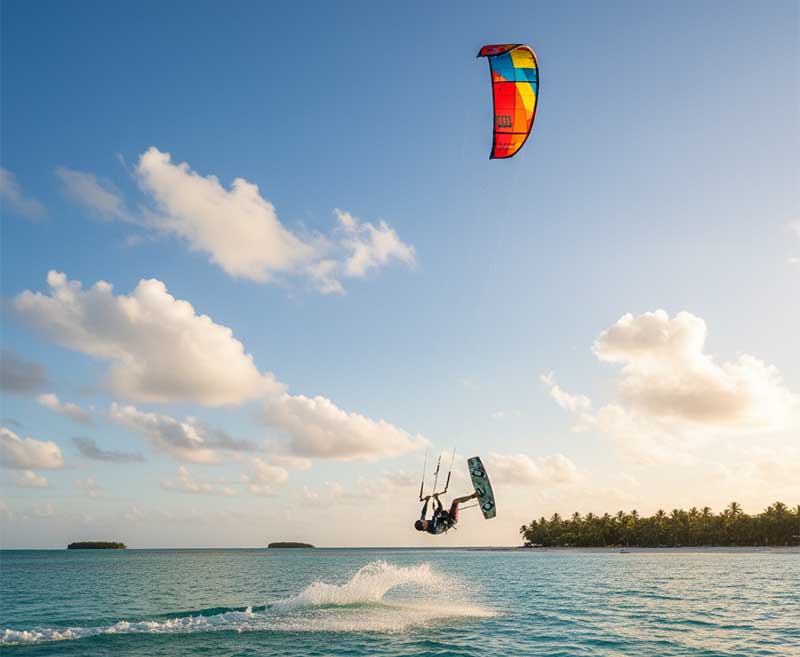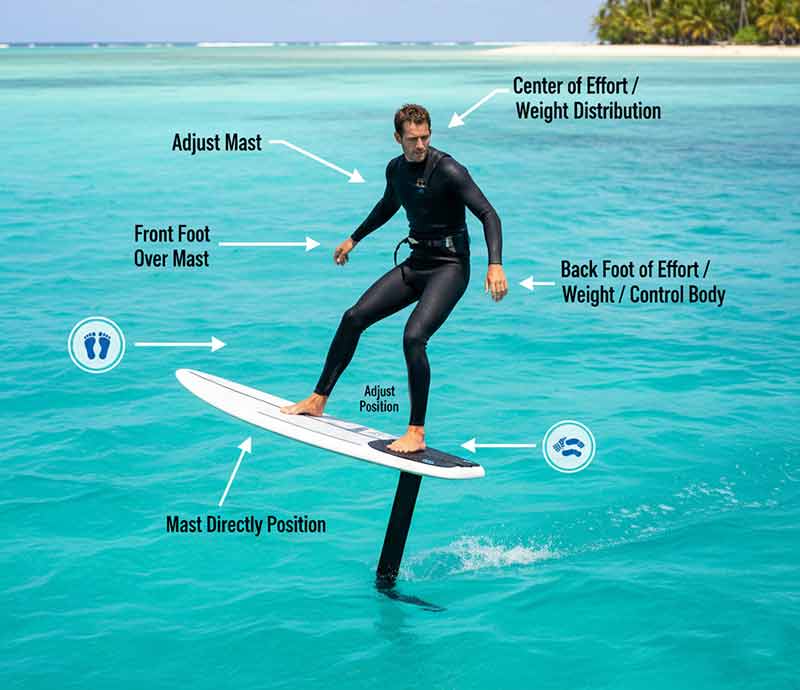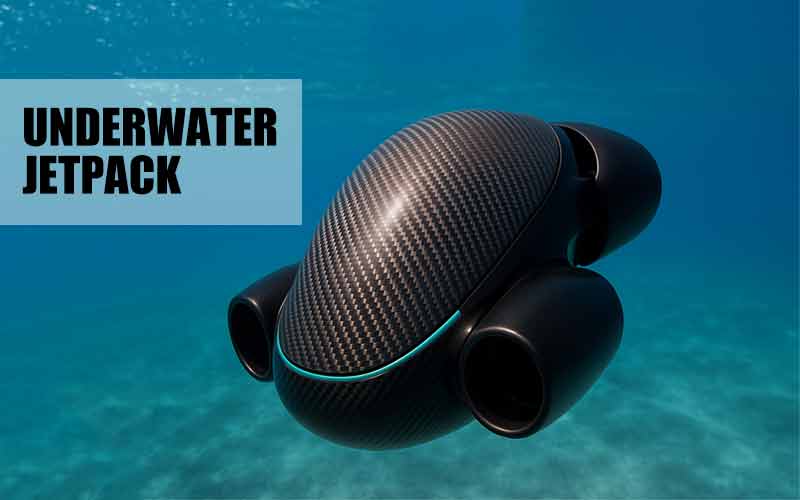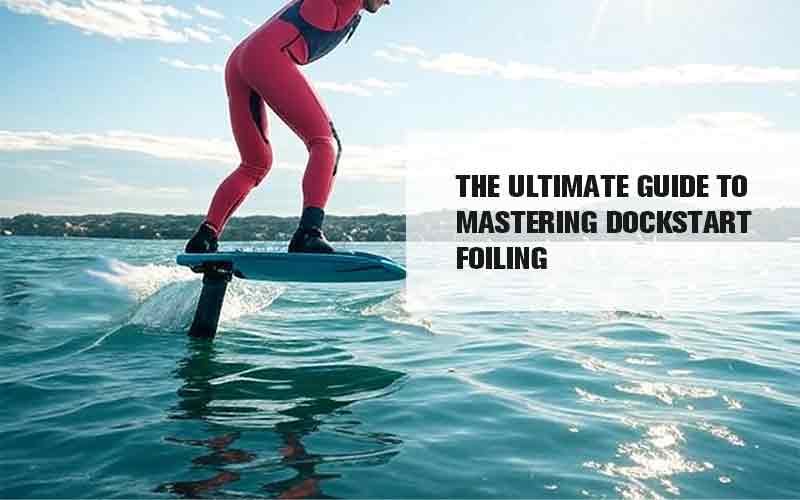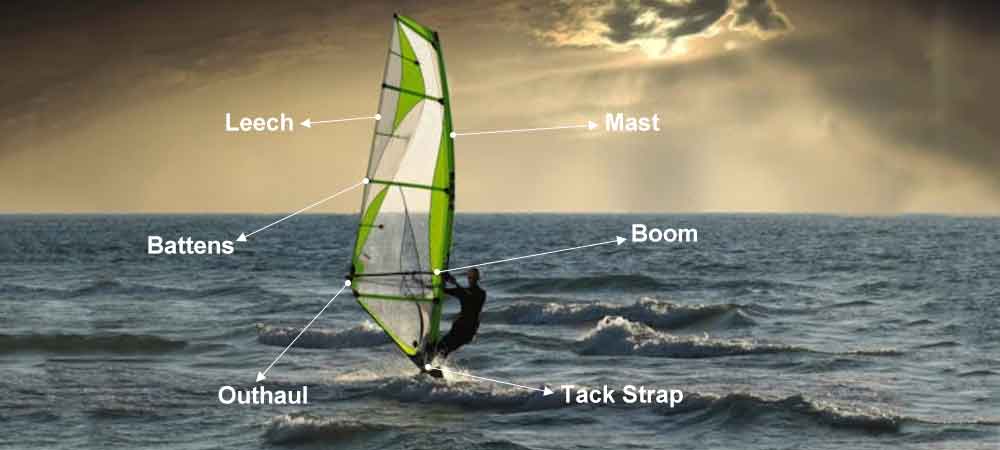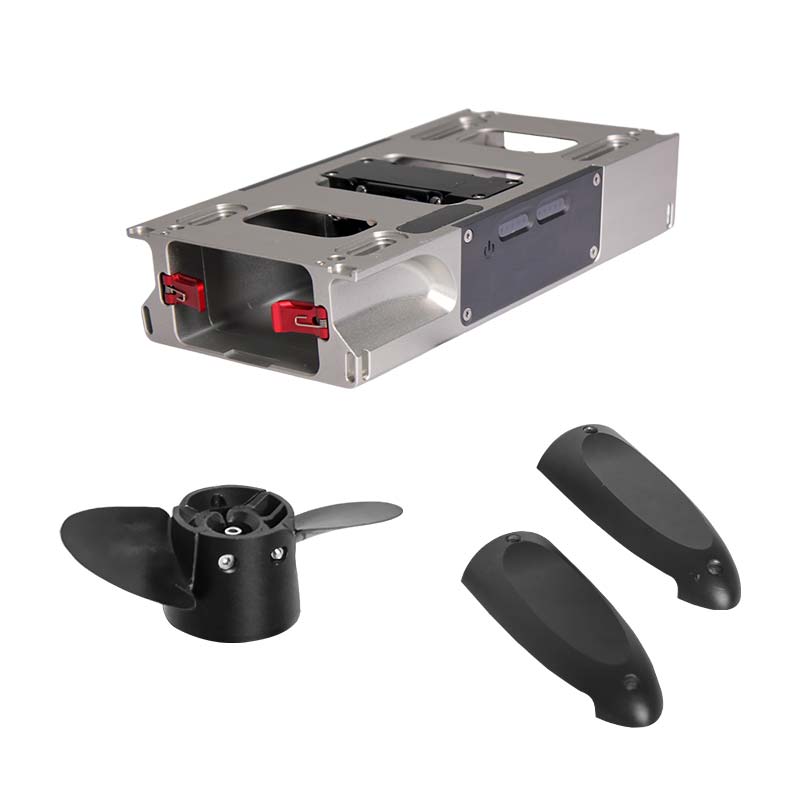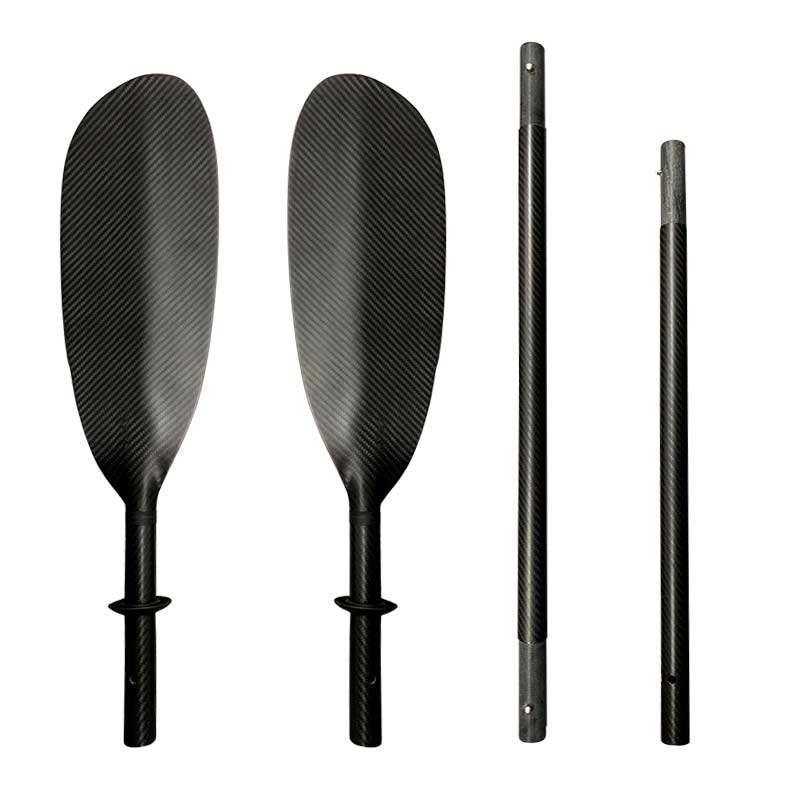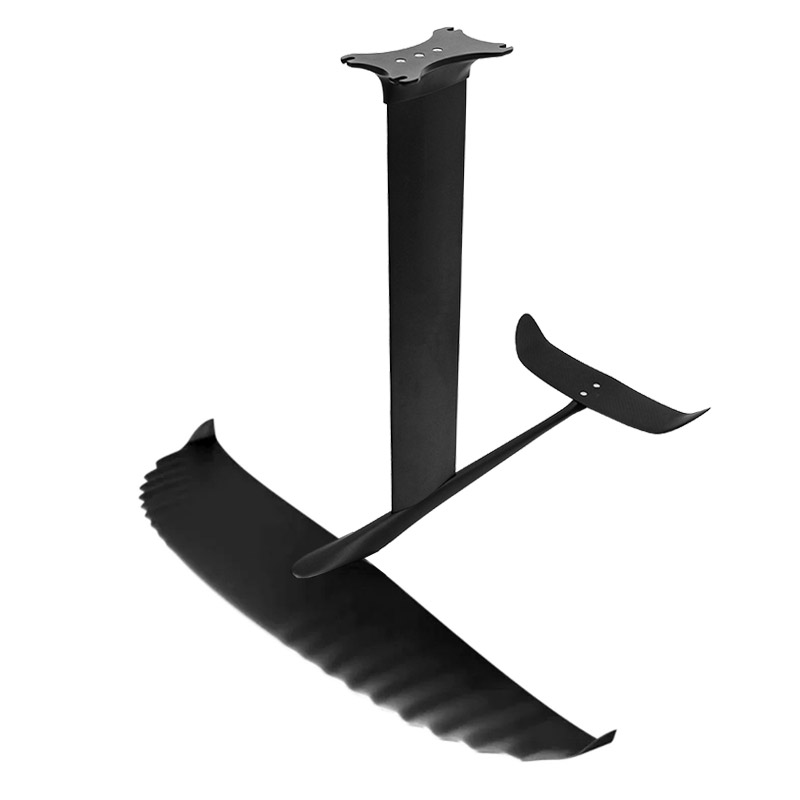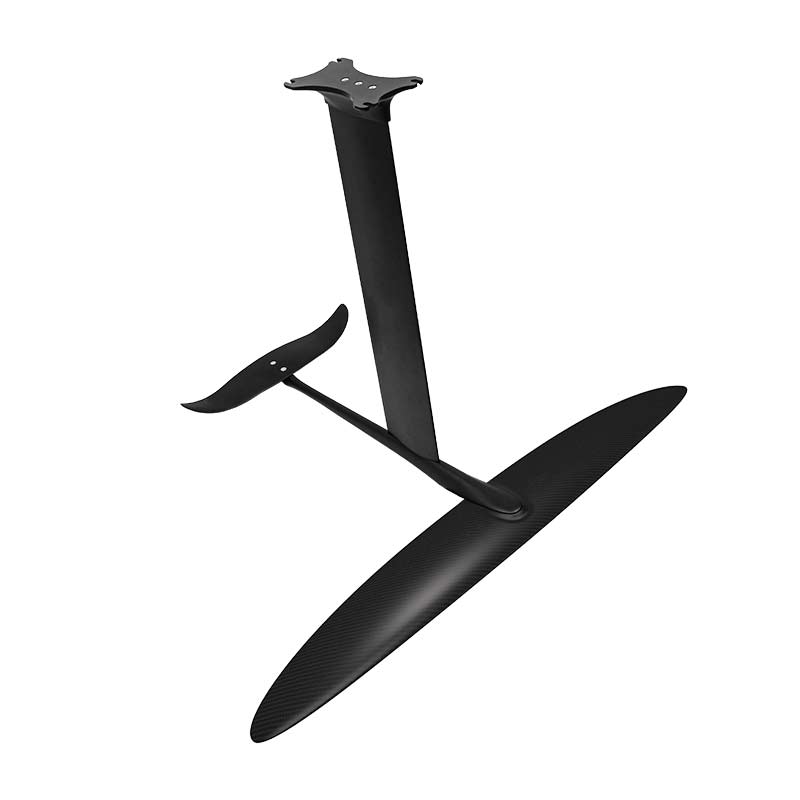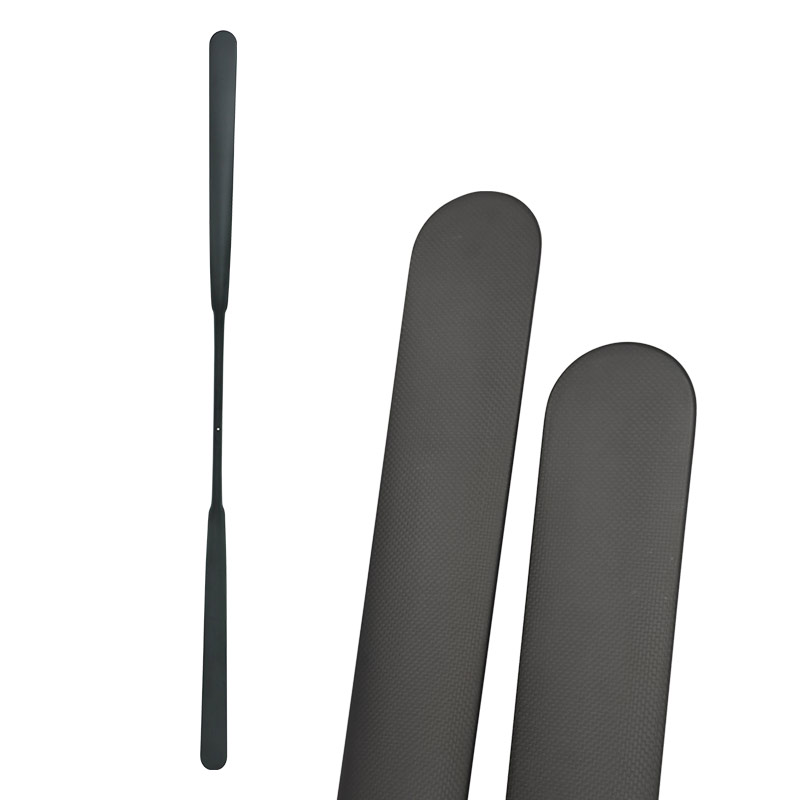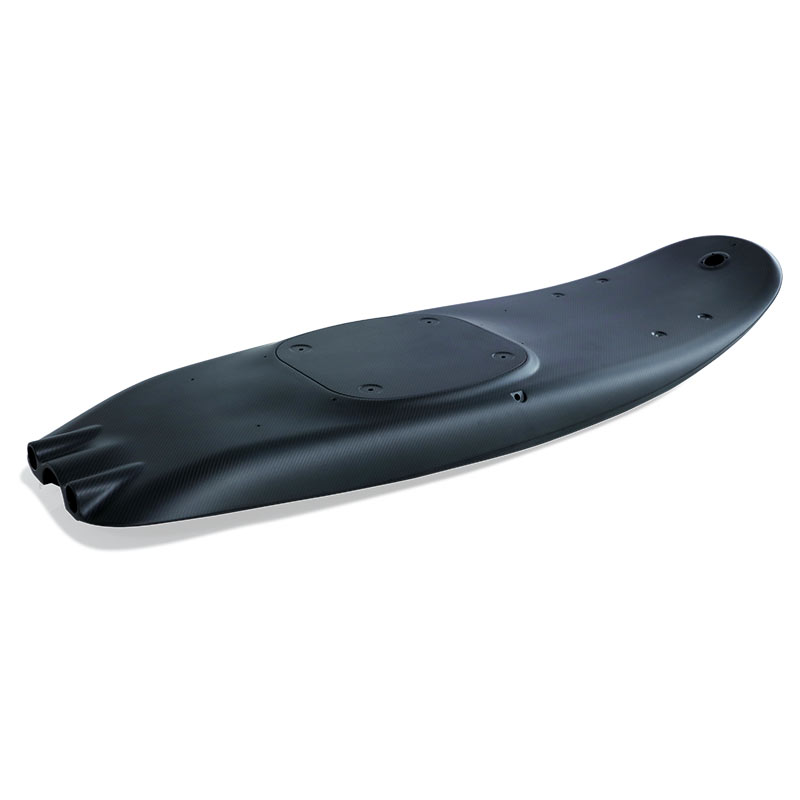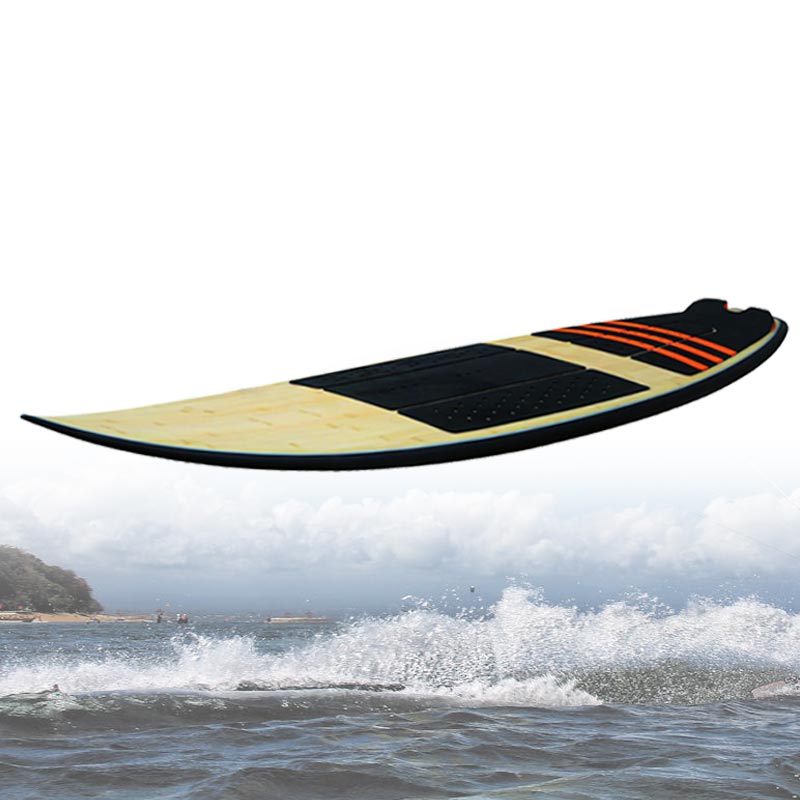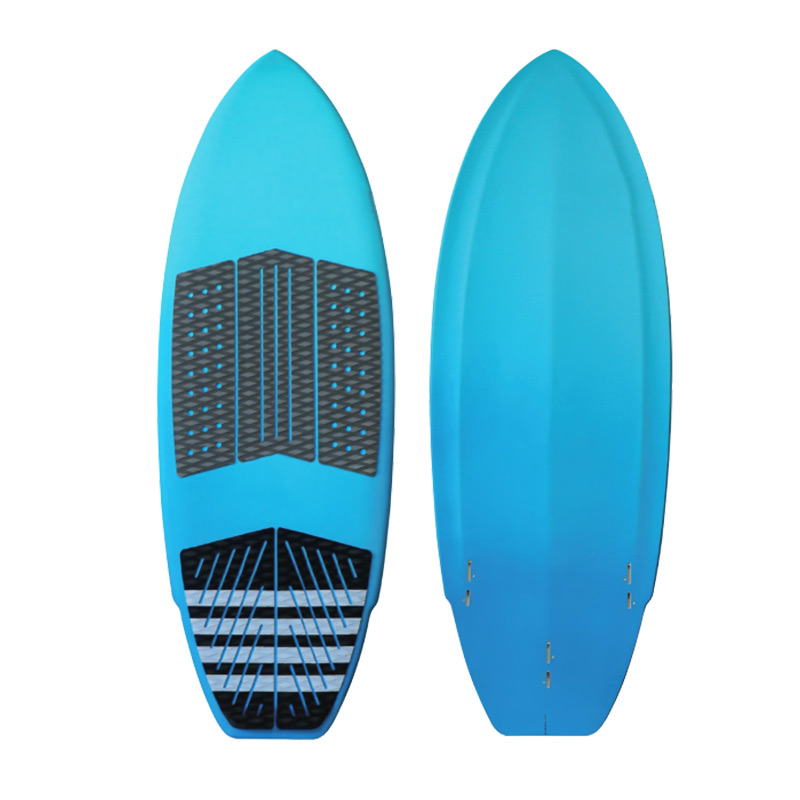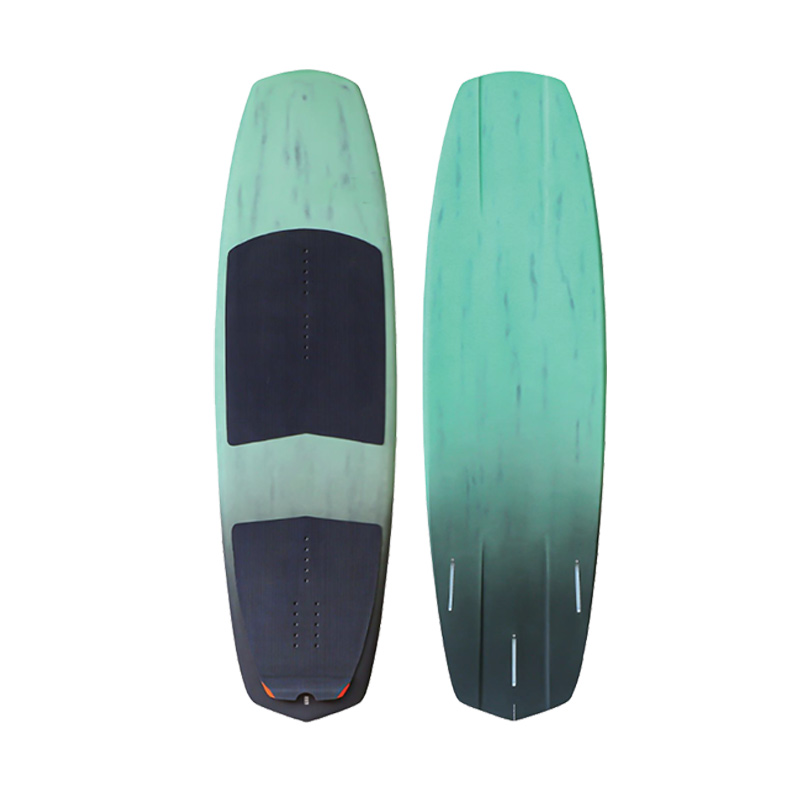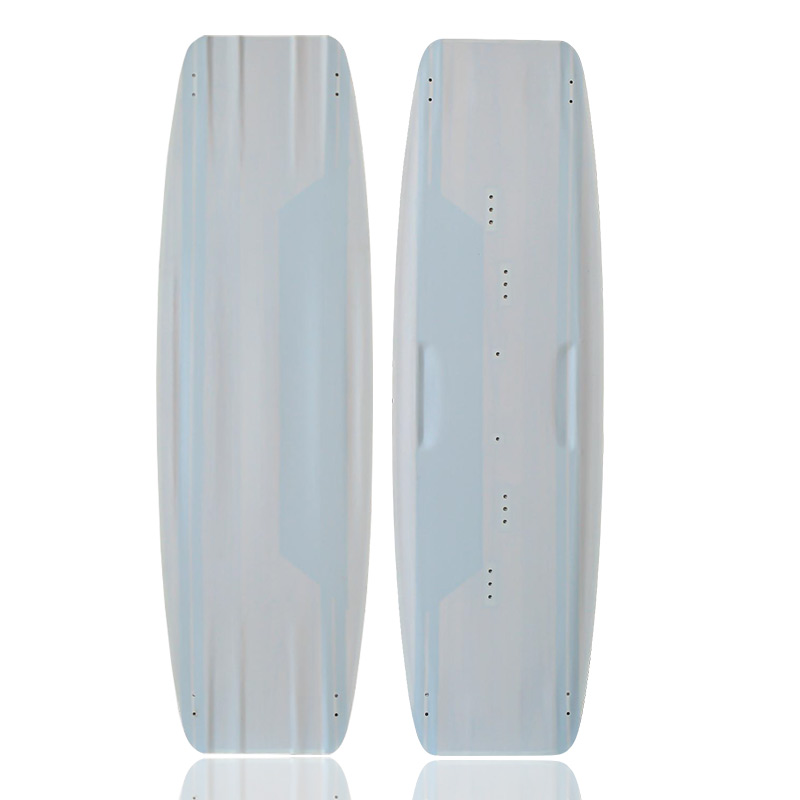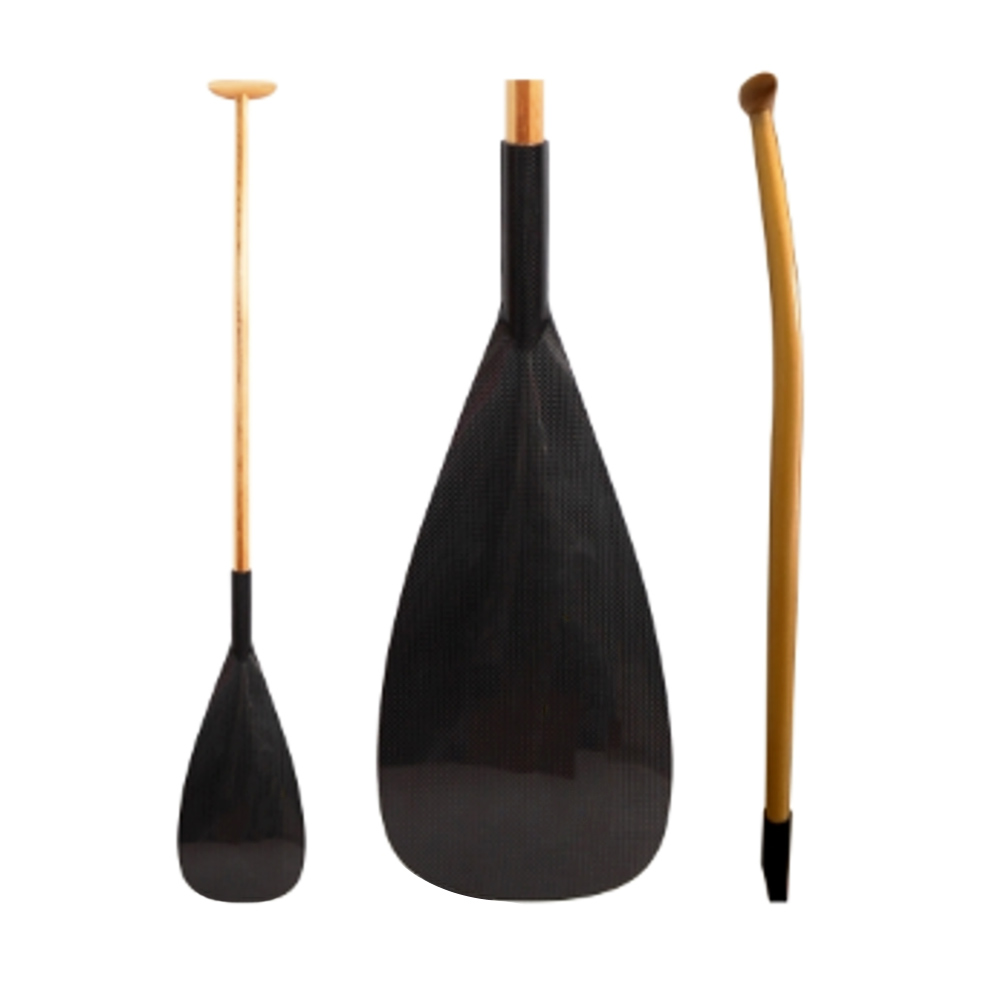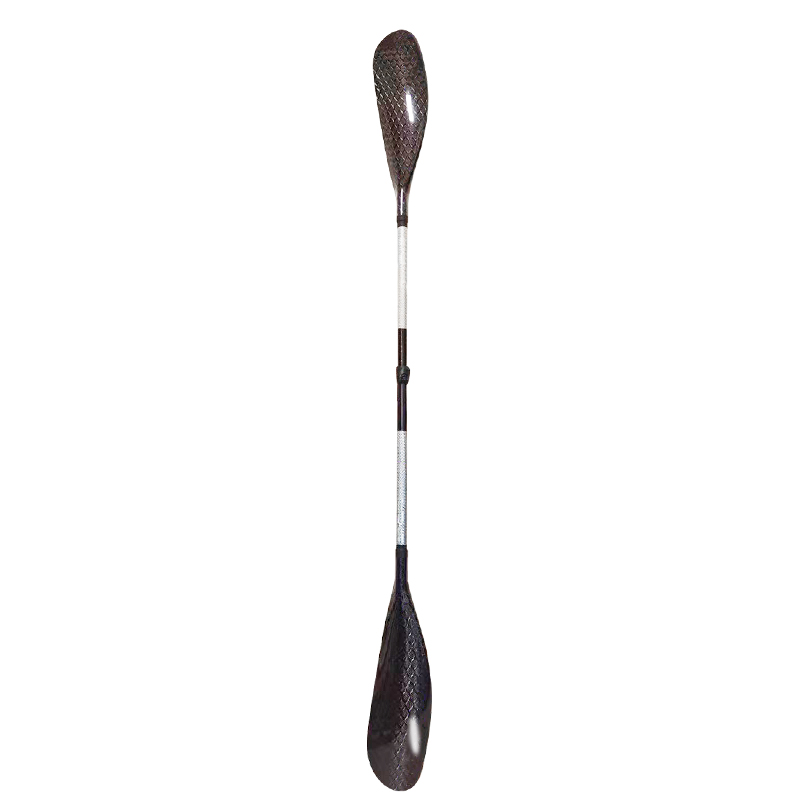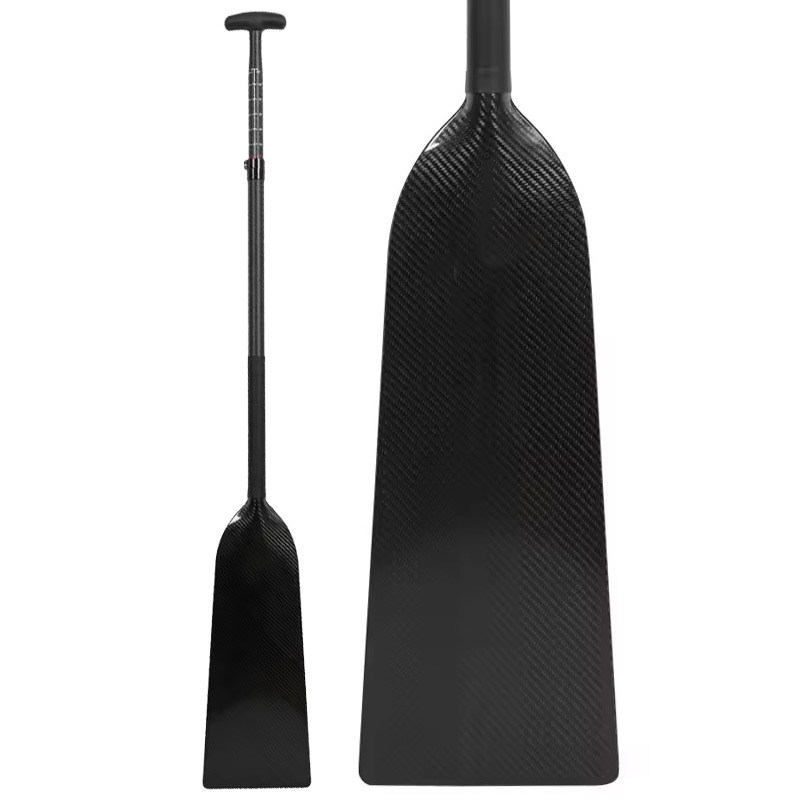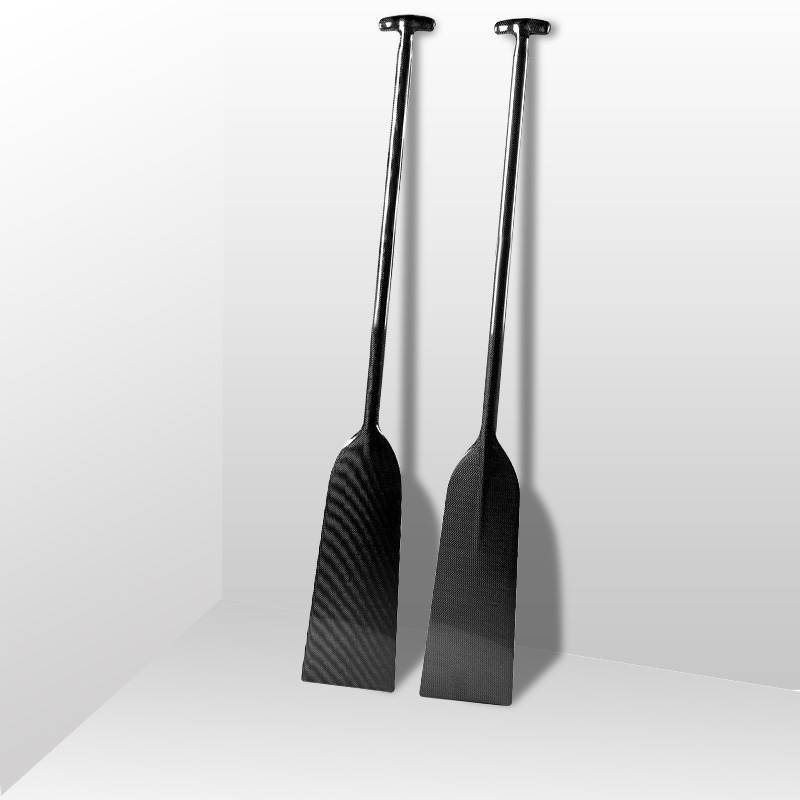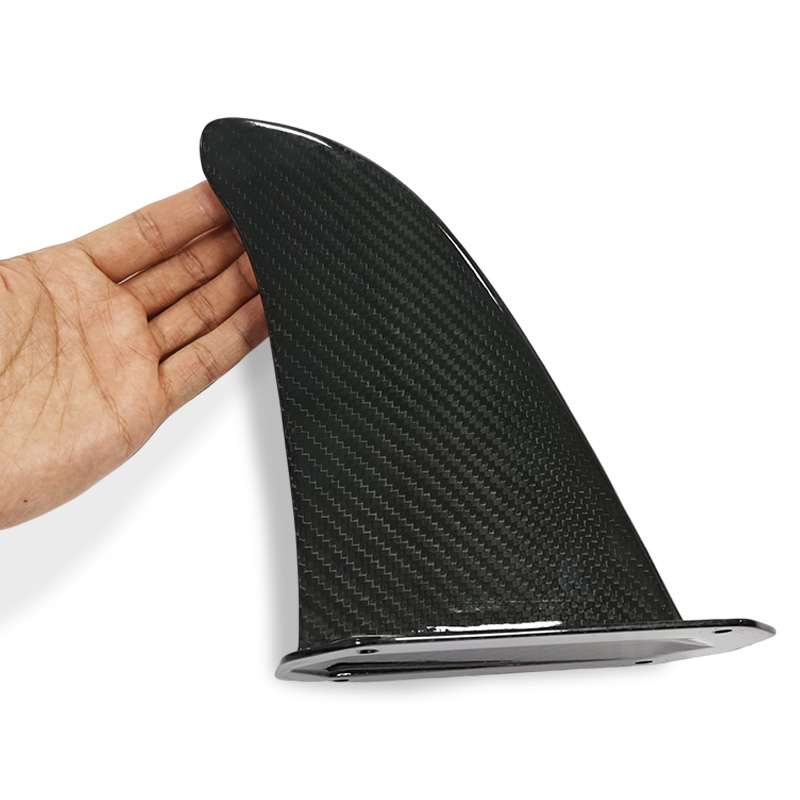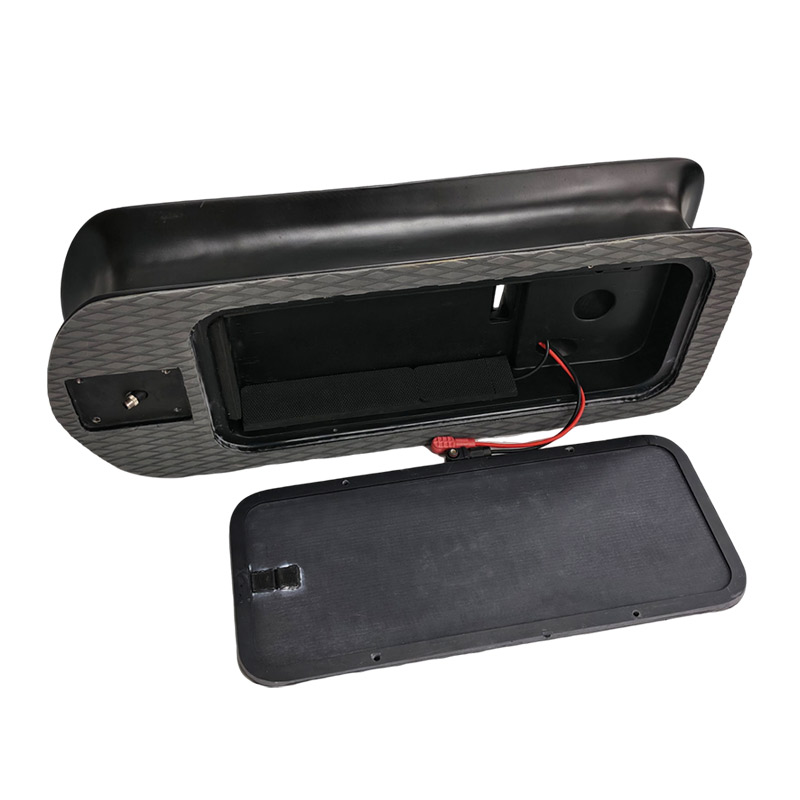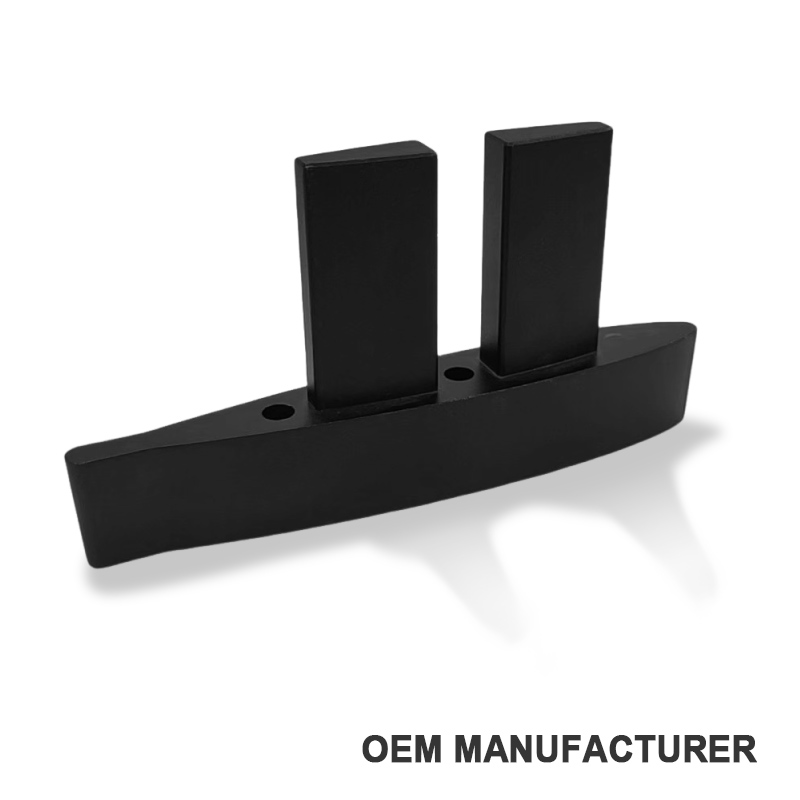Wing foiling mistakes are common, especially for beginners stepping into this dynamic and fast-growing sport. Wing foiling—also called wing surfing—blends the thrill of windsurfing, kitesurfing, and hydrofoiling into one exhilarating experience. But mastering it can be tricky without the right guidance. To help you learn faster and ride with confidence, we’ve gathered the five most frequent wing foiling mistakes beginners make, along with expert tips on how to avoid them. Whether you’re just starting out or sharpening your technique, steering clear of these errors will boost your progression and enjoyment on the water.
In this article, we will show you the common wing foiling mistakes for the beginner wingfoiler, and we hope it will help you to avoid these in your wingfoiling learning lesson. And if you are interested in wing hydrofoil wholesale, welcome to contact us to get the factory price.
1. Choosing the Wrong Gear
One of the most common and costly wing foiling mistakes beginners make is choosing the wrong gear. Whether it’s a foil that’s too advanced or a board that’s too small and unstable, the wrong equipment can dramatically slow your progress and lead to unnecessary frustration. Wing foiling has seen rapid technological advancements in recent years, and using outdated or mismatched gear can make the learning curve feel steeper than it needs to be.
A frequent wing foiling mistake is underestimating the importance of volume and size in beginner boards. Many newcomers pick boards that are too short or narrow, thinking they’ll grow into them, only to find themselves struggling just to stand up. Similarly, selecting a foil with too small a surface area can make it hard to get on the foil, especially in lighter wind conditions.
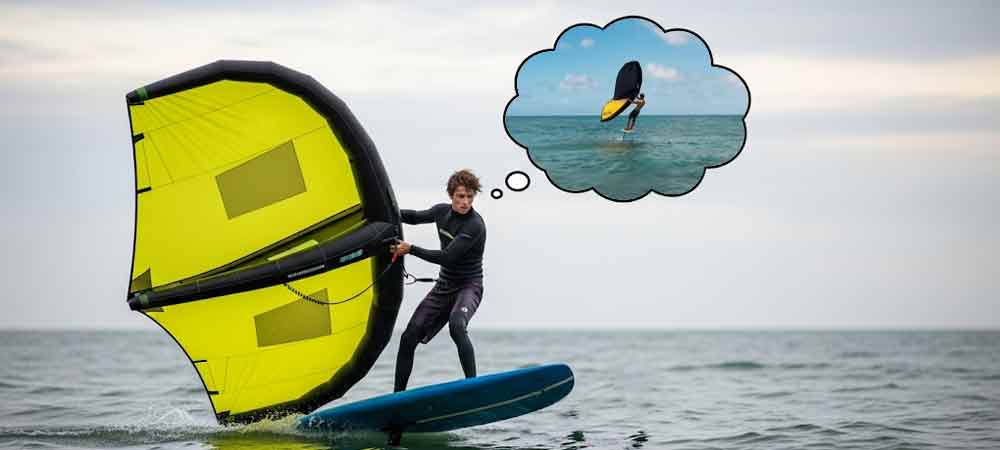
How to choose the right wingfoiling gear?
Invest in gear that suits your current skill level, not your future aspirations. As a beginner, you’ll benefit greatly from a board with higher volume—typically around 100–140 liters—depending on your weight. This added stability will help you practice foot positioning, balance, and handling the wing without constantly falling in. A larger front wing on your foil (around 1500–2000 cm²) will provide smoother lift and easier take-off at slower speeds, ideal for learning.
Don’t overlook the importance of a properly sized wing, either. Too large a wing can be overwhelming, while too small may not generate enough power in lighter winds. Talk to local instructors, visit a specialized water sports shop, or refer to trusted online buying guides. Demo gear, if possible, before purchasing to find what truly works for you.
2. Failing to Pump the Wing
Another common wing foiling mistake beginners make is not actively generating power with the wing—simply holding it in place and expecting to move forward. Unlike windsurfing, where the sail naturally pulls you once positioned, wing foiling often requires a more active approach, especially in light or variable wind conditions. Without proper wing movement, you may struggle to generate lift, remain off-foil, or find it hard to stay balanced and in motion.
A typical sign of this mistake is when riders stand on the board with the wing overhead, waiting for a miracle gust. Unfortunately, that gust may never come, and even if it does, you might not be in the right position to take advantage of it. This passive stance can lead to repeated failed attempts to get on foil, causing fatigue and discouragement.
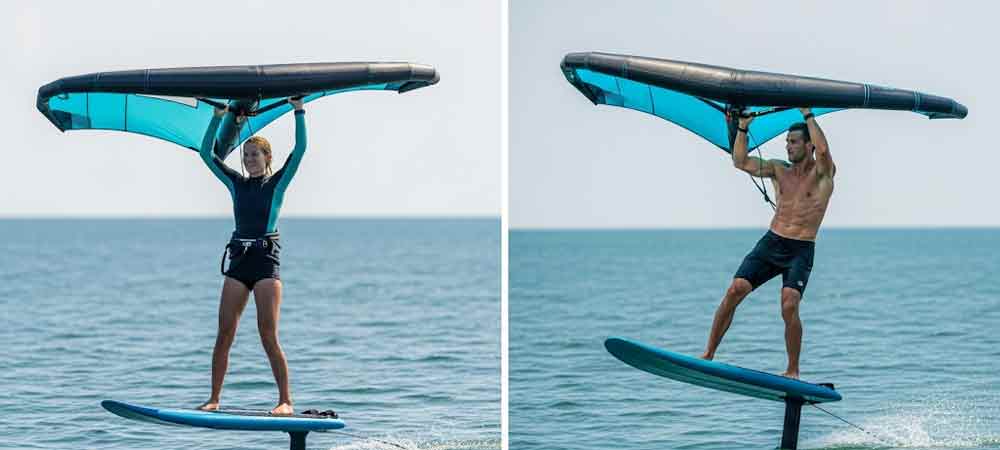
How to avoid this wing foil mistake?
Mastering the technique of wing pumping is essential to initiate and sustain movement. Pumping involves actively moving the wing in a rhythmic, circular or elliptical motion to create bursts of forward power. Use your backhand to drive the wing down and forward, engaging your core and shoulders for better control and efficiency. At the same time, apply gentle pressure to your back foot to help direct lift through the foil.
Pumping not only helps you get on foil quicker but also allows you to stay on foil longer when the wind drops. It’s a skill that becomes even more crucial in light wind spots or gusty conditions.
To improve faster, practice pumping on land to understand the mechanics, then transition to shallow water with moderate wind. Video tutorials and lessons from experienced riders can also dramatically speed up your progress.
3. Poor Body Positioning
Poor body positioning is one of the most overlooked yet impactful wing foiling mistakes—and it can drastically affect your balance, control, and ability to get on foil. Many beginners either stand too upright like they’re on a SUP or hunch too far forward in an attempt to “power through” the motion. Both postures throw off your center of gravity and increase the risk of instability, nose-diving, or being pulled off balance by the wing.
When you stand too tall, you lose connection with the board and have less control over micro-adjustments needed to respond to changes in wind or foil lift. On the other hand, bending too far forward shifts too much weight over the nose, causing the board to plow into the water rather than glide smoothly.
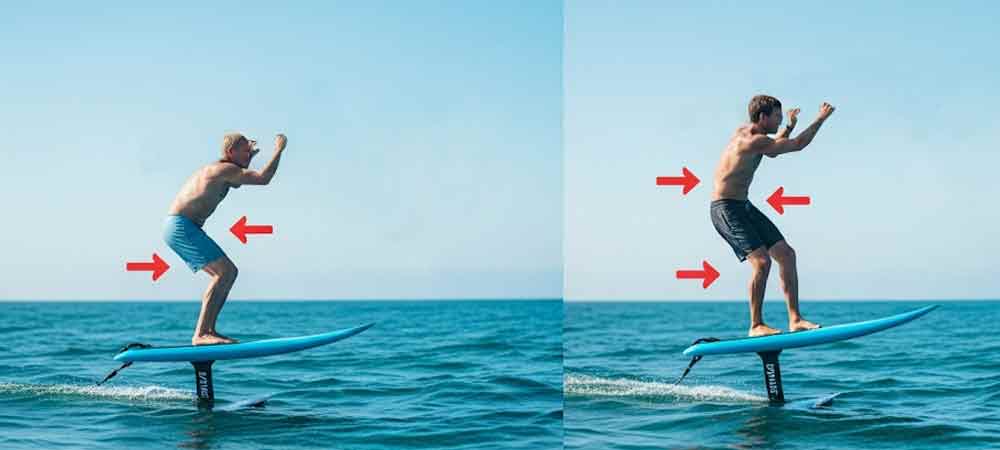
Right Body Position
The key is to adopt a low, athletic stance—similar to a snowboard or surf-ready position. Keep your knees slightly bent, your hips mobile, and your back straight with a subtle lean backward to counteract the pull of the wing. This posture not only improves stability but also allows your legs and core to absorb motion and make real-time adjustments.
Position your feet shoulder-width apart or slightly wider, with more pressure on the back foot to encourage early lift and avoid nose-dives. Hold the wing high and slightly forward, allowing it to create upward lift rather than dragging you forward.
Practice body positioning on land or in light wind days with minimal chop. Some riders even benefit from doing a few balance drills or using a balance board to build muscle memory for the correct stance.
4. Over-Pulling with the Backhand
Over-pulling with the backhand is another frequent wing foiling mistake—and one that often leads to frustrating wipeouts. When beginners feel they’re not getting enough power from the wing, their natural reaction is to pull harder with their backhand, thinking it will generate more speed or lift. Instead, this often causes the wingtip to dip into the water, dragging or flipping the wing, and throwing the rider off balance.
This mistake is especially common in gusty wind conditions, when riders respond reactively rather than with control. Over-pulling can make the wing unstable, stall your speed, or even cause you to nosedive if the foil suddenly loses lift. In short, more pull doesn’t always mean more power—it can mean more chaos.
Solution:
Focus on smooth, deliberate movements instead of brute force. The backhand should control the wing’s power, but it doesn’t need to yank it. If you feel your wingtip getting too close to the water, resist the urge to pull harder. Instead, push your backhand down toward the water—this subtle “punch the water” move lifts the wingtip and repositions the wing for better flight and stability.
Additionally, keeping the wing at a slightly upward angle rather than horizontal helps prevent tip strikes. Aim for consistent wing height and steady power delivery rather than constant adjustment.
Practicing in moderate, steady wind can help you learn proper wing control without the need to overcompensate. Many experienced foilers recommend dry-land drills or light-wind water sessions to train hand sensitivity and balance.
5. Going Too Far Downwind
Going too far downwind is one of the most frustrating and energy-draining wing foiling mistakes beginners make. It typically happens when new riders don’t apply enough directional control, causing the board to drift downwind rapidly. As you drift, the wing loses tension and power, the foil becomes unstable, and eventually, you’re stuck far from your starting point—facing the dreaded “walk of shame” or paddle back upwind.
This issue is often a result of two things: looking straight down at the board instead of ahead, and failing to use foot pressure and body alignment to guide the board upwind. Without proper technique, you’ll find it nearly impossible to maintain ground and make progress in the direction you actually want to go.
How To Control It?
To maintain control and avoid heading too far downwind, you need to actively steer the board slightly into the wind—not directly into it, but enough to keep tension on the wing and power flowing smoothly. This upwind angle allows you to stay in the wind window and maintain forward momentum with balance.
Apply gentle pressure with your back leg and shift your weight slightly toward your heels to initiate a subtle upwind carve. Just as importantly, look where you want to go, not at your feet or the nose of the board. Your head and eyes naturally guide your body and board—this simple trick can significantly improve your navigation.
Make sure the wing is held forward and slightly above your head, not dragging behind you. This positioning helps create lift and keeps you moving in a controlled direction rather than being pulled sideways or downwind.
6. Over-Edging Into the Wind
As a bonus tip, one often-overlooked wing foiling mistake—especially among eager beginners—is over-edging too hard into the wind. While going upwind is an essential skill in wing foiling, pushing the board too far into the wind too early can backfire. When you edge too aggressively, the wing moves out of the optimal wind window, loses power, and stalls—often followed by a loss of balance and an unexpected splash.
This mistake usually happens when riders adopt a stiff, locked-in stance and try to force the board to point too far upwind, thinking it will help them make ground. In reality, this overcorrection disrupts the natural flow of the ride and makes it harder to maintain foil lift or forward momentum.
Stay Relaxed and Let the Foil Do the Work
The key is to stay relaxed and fluid in your stance. Avoid locking your legs or leaning too hard into the wind. Instead, allow the board to cruise slightly across the wind, keeping the wing in a position where it can generate steady, usable power. Let the foil do the work—your goal should be gliding efficiently rather than muscling into the wind.
As you build experience, you’ll develop better upwind technique and eventually learn to tack or jibe cleanly. But early on, it’s more important to maintain smooth, controlled movements and a comfortable body position that lets you adjust your direction without killing your speed.

Pro Tip: Persistence Pays Off
Wing foiling is challenging but incredibly rewarding. As Kelly, a beginner wing foiler, shared, persistence is key. Embrace the learning process, enjoy small victories, and don’t get discouraged by setbacks. Every session on the water brings you closer to mastering this exciting sport. For more guide, welcome to visit YouTube to find the wingfoiling video.
Conclusion: Wing Foiling Mistakes
Avoiding these wing foiling mistakes—choosing the wrong gear, failing to pump the wing, poor body positioning, over-pulling with the backhand, and going too far downwind—will accelerate your progress and make wing foiling more enjoyable. With the right equipment, techniques, and mindset, you’ll be riding confidently in no time. For more tips, check out online tutorials or connect with local wing foiling communities.

